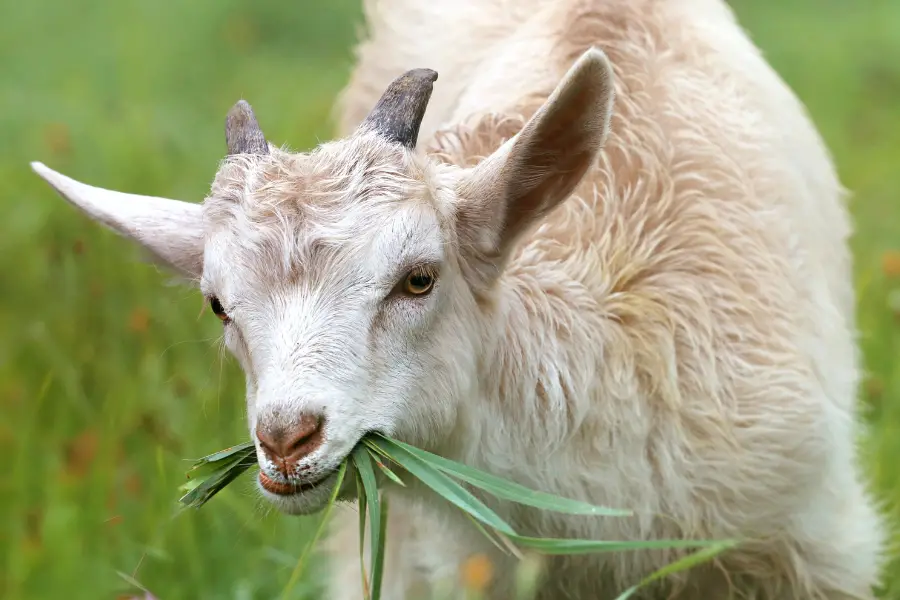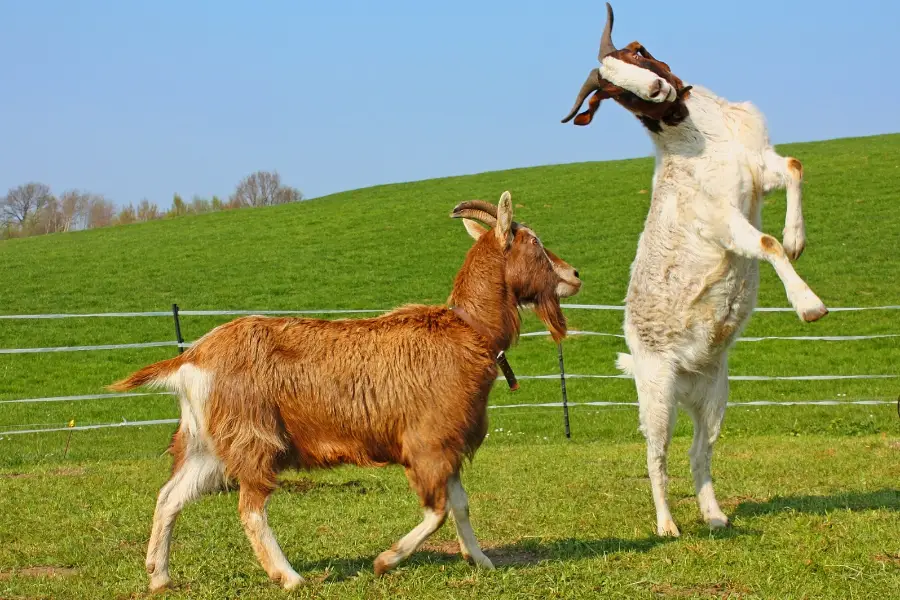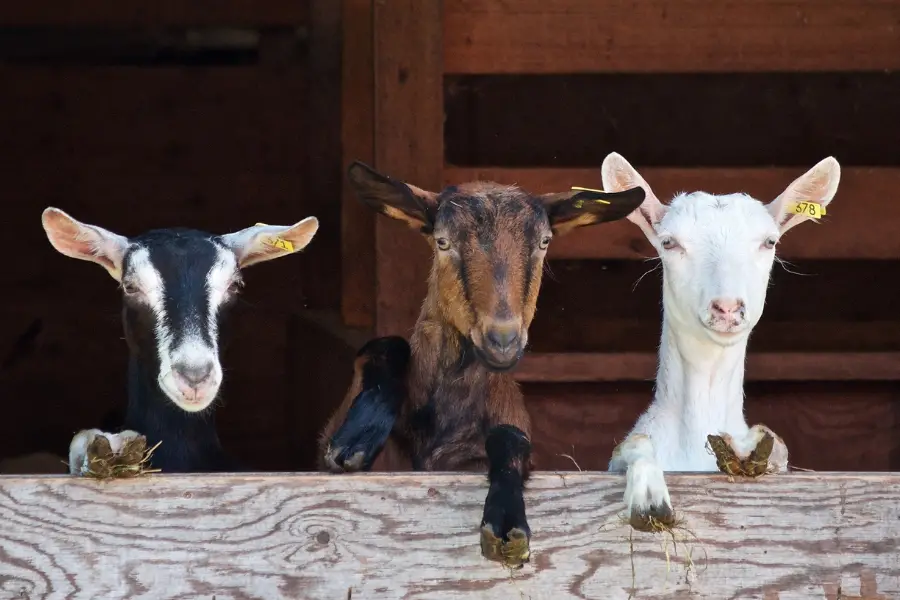
If you are interested in goat farming and would like to breed a type of goat that is very popular, as well as commercially successful, you may want to learn more about Jamunapari goats.
This is a unique breed of goat that has an Indian subcontinent origin. They have been exported to Indonesia, and have become quite successful in the area. They can also be found in Bangladesh.
There are a couple of Jamunapari goat uses. These goats have been bred for meat and milk, the latter of which they are quite popular for. They are ideal for commercial farming, as they have a high daily milk yield, and large, long teats that make them easy to milk.
It is delicious, and quite healthy, although it is high in fat. If you are more interested in raising them for meat, Jamunapari goats have wonderful meat quality, with a high meat to bone ratio.
Table of contents
Jamunapari Goat Origin

As mentioned in the introduction, the Jamunapari goat originated in India, and was then exported to several other regions in India, as well as other areas. It is an ancestor of the American Nubian goat, and gets its name from rivers in India, the Jamuna and the Yamuna, and it is shipped from this area to other regions. Since its rise in popularity, it has become a prized breed because of its tasty milk and delicious meat.
The Jamunapari goat also has awesome show qualities, and it has been successful in the farming industry in Indonesia since 1953 when it was exported to the area. Jamunapari goats are also referred to as Ram Sagol and Jamunapari. A 1972 census in India shows that there were estimated to be approximately 580,000 Jamunapari goats in India, although fewer than 5,000 were considered purebred.
Jamunapari Goat Characteristics
Raising Jamunapari Goats

One of the great things about raising Jamunapari goats is that you can make a pretty decent profit once you know what you are doing. You need to have a proper business plan, and a good marketing strategy. These goats can be raised for milk and meat, or to sell to others who want to use them for milk and meat.
No matter what type of goats you intend to raise and/or breed, there are certain things you will need to know in order to have healthy and happy animals that will bring the highest prices, whether it be for the animals, their milk, or their meat.
One of the most important things is the right Jamunapari goat shelter. They need to have a room that measures at least 10 by 12 square feet, and this should accommodate up to 15 goats. Housing can be made from a variety of materials. For instance, you can use wood, bamboo, or concrete poles. There should be a proper ventilation system to keep the floor dry. If you are breeding, it is important to have a separate house for the males for breeding purposes.
Fencing is very important. These are incredibly agile animals, and they can jump very high. They can also scale heights as high as six feet. You need to make sure that you have adequate fencing that will keep your animals safely contained.
There should be clean water available to them at all times, and make sure that they have plenty of open space for grazing. They should also have a varied diet, so make sure you are feeding your animals barley and other grains. They also love peanut grass, and CO-1 and CO-2 grasses are great for fast weight gain, not to mention a higher milk yield. The babies will feed off their mothers for the first three months of their lives, and they can also have grasses and leaves during this period.
Here are a few more things to know about raising Jamunapari goats:
These goats tend to give birth to one kid per year
- Jamunapari goats are not available to buy in the United States, but you can have them imported
- This is a sociable breed that will gladly interact with man other types of livestock, and it is friendly with people
- Prepare your business plan or project report, and make sure it includes your own personal investment, the total amount of dollars that will be spent on housing, medical expenses, feeding, etc.
- Disinfect the area where your goats will be living before they arrive at your farm. The floor of the house should also be cleaned, and vaccinations should be done before you bring them home
- You can reduce your feed costs by growing green fodder cups, such as subabul, maize, and wheat grass. The more food you raise yourself, the lower your expenses are going to be. Remember, feed is one of the most expensive aspects of farming
- Pregnant does and newborn kids need lots of attention, and you need to make sure they always have extra feed available to them
- Clean their houses regularly. Feeders, drinkers, etc. should be cleaned on alternate days, and anything that is washed needs to be thoroughly dried
Breeding Jamunapari Goats

Now, let’s talk about breeding these animals. Jamunapari goat breeders need to make sure that they have the proper housing for their goats, to ensure that the animals are safely bred and that the kids can be born in a stress-free environment.
These animals reach puberty between four and nine months, depending on the sex, and they reach breeding age between one year and 18 months. They usually have one breeding cycle per season, and one male can impregnate up to 30 does in a single season.
Each breeding cycle is 12 to 36 hours over an average of 18 to 24 days. The gestation period is approximately 150 days, and one to two kids will be born per litter.
Jamunapari goats are excellent mothers, and they wean their own kids so you don’t have to do anything except enjoy watching them grow and thrive. The lactation period is 250 to 284 days, with the latter number being the most common. They will milk for an average of four to six weeks, and they can produce two to three liters of milk per day.
Buying Jamunapari Goats

Now it’s time to talk about actually buying Jamunapari goats. This is not an undertaking to get into lightly. Remember, you will need to have plenty of time on your hands if you really want to get serious about any type of farming, and when animals are involved, you need to know that you have time to care for them.
If you are planning to buy a herd of these goats, it is a good idea to look for sellers that are nearby, so you don’t have to spend a lot of money on transportation.
When it comes to buying animals, Jamunapari goat prices can vary. Generally, you can expect to spend anywhere from $200 to $500 per animal. The price will depend on a number of factors, including the age, sex, and size of the animal. Keep in mind that these animals are not available for sale in the United States. You will need to have them imported if you want to start raising them.
Another price to consider is the price of meat, if that is what you are going to breed your goats for. As a rule, the price can vary from region to region. Generally, a kilogram of goat meat can cost anywhere from $3 to $3.50.




